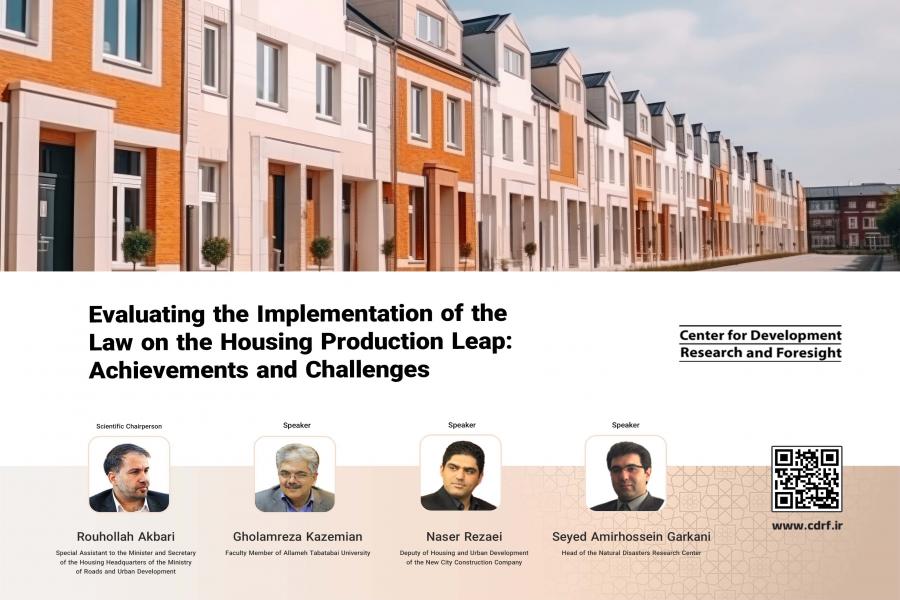
-
بررسی آییننامهها و دستورالعملهای برنامه هفتم پیشرفت
-
بررسی عوامل موثر بر افزایش تصادفات و تلفات جادهای و سوانح رانندگی و دادهکاوی تلفات انسانی
-
سازماندهی و بازآرایی فضایی آموزش عالی کشور
-
به روز رسانی سند ملی آمایش سرزمین
-
انجام مطالعات مناطق آزاد به عنوان نواحی پیشران اقتصادی کشور
-
اصلاح ساختار بودجه و پیاده سازی نظام یکپارچه مدیریت اطلاعات مالی دولت (IFMIS)

In a recent conference titled "Evaluating the Implementation of the Law on the Housing Production Leap: Achievements and Challenges" hosted by the Center for Development Research and Foresight (CDRF) it has been an enlightening debate surrounding the effectiveness of the Law on Housing Production Leap.
A central theme throughout the conference is the need for the government to strike a balance between affordability and quality in housing construction. The speakers emphasize that new housing developments should cater to the needs of the population, ensuring they are accessible not just to high-income earners. This aligns with criticisms lodged by some citizens who argue that current efforts prioritize quantity over quality, leading to a surge in generic, poorly designed housing units.
Land availability emerges as another critical factor. The conference highlights the importance of the government securing sufficient land for housing projects. This echoes concerns raised by developers who have encountered hurdles due to limited land designated for residential purposes. The speakers suggest streamlining procedures and exploring alternative solutions, potentially including the development of underutilized areas.
The experts in the conference also acknowledge the challenge posed by inefficient and potentially hazardous urban environments. They advocate for the improvement of existing neighborhoods alongside the construction of new housing units. This two-pronged approach could involve urban renewal projects aimed at revitalizing neglected areas and ensuring the safety and well-being of residents.
An intriguing aspect of this conference is the government's reported efforts to establish new, specialized cities. The experts suggest these cities might serve specific economic or industrial purposes, fostering innovation and productivity. This concept has sparked curiosity among urban planning experts, who are eager to learn more about the government's vision for these specialized urban centers.



